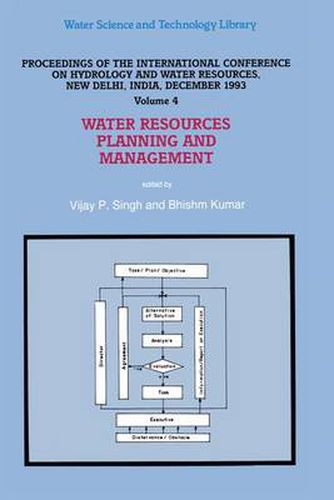Readings Newsletter
Become a Readings Member to make your shopping experience even easier.
Sign in or sign up for free!
You’re not far away from qualifying for FREE standard shipping within Australia
You’ve qualified for FREE standard shipping within Australia
The cart is loading…






This title is printed to order. This book may have been self-published. If so, we cannot guarantee the quality of the content. In the main most books will have gone through the editing process however some may not. We therefore suggest that you be aware of this before ordering this book. If in doubt check either the author or publisher’s details as we are unable to accept any returns unless they are faulty. Please contact us if you have any questions.
Water is vital to life, maintenance of ecological balance, economic development, and sustenance of civilization. Planning and management of water resources and its optimal use are a matter of urgency for most countries of the world, and even more so for India with a huge population. Growing population and expanding economic activities exert increasing demands on water for varied needs–domestic, industrial, agricultural, power generation, navigation, recreation, etc. In India, agriculture is the highest user of water. The past three decades have witnessed numerous advances as well as have presented intriguing challenges and exciting opportunities in hydrology and water resources. Compounding them has been the growing environmental consciousness. Nowhere are these challenges more apparent than in India. As we approach the twenty first century, it is entirely fitting to take stock of what has been accomplished and what remains to be accomplished, and what accomplishments are relevant, with particular reference to Indian conditions.
$9.00 standard shipping within Australia
FREE standard shipping within Australia for orders over $100.00
Express & International shipping calculated at checkout
This title is printed to order. This book may have been self-published. If so, we cannot guarantee the quality of the content. In the main most books will have gone through the editing process however some may not. We therefore suggest that you be aware of this before ordering this book. If in doubt check either the author or publisher’s details as we are unable to accept any returns unless they are faulty. Please contact us if you have any questions.
Water is vital to life, maintenance of ecological balance, economic development, and sustenance of civilization. Planning and management of water resources and its optimal use are a matter of urgency for most countries of the world, and even more so for India with a huge population. Growing population and expanding economic activities exert increasing demands on water for varied needs–domestic, industrial, agricultural, power generation, navigation, recreation, etc. In India, agriculture is the highest user of water. The past three decades have witnessed numerous advances as well as have presented intriguing challenges and exciting opportunities in hydrology and water resources. Compounding them has been the growing environmental consciousness. Nowhere are these challenges more apparent than in India. As we approach the twenty first century, it is entirely fitting to take stock of what has been accomplished and what remains to be accomplished, and what accomplishments are relevant, with particular reference to Indian conditions.